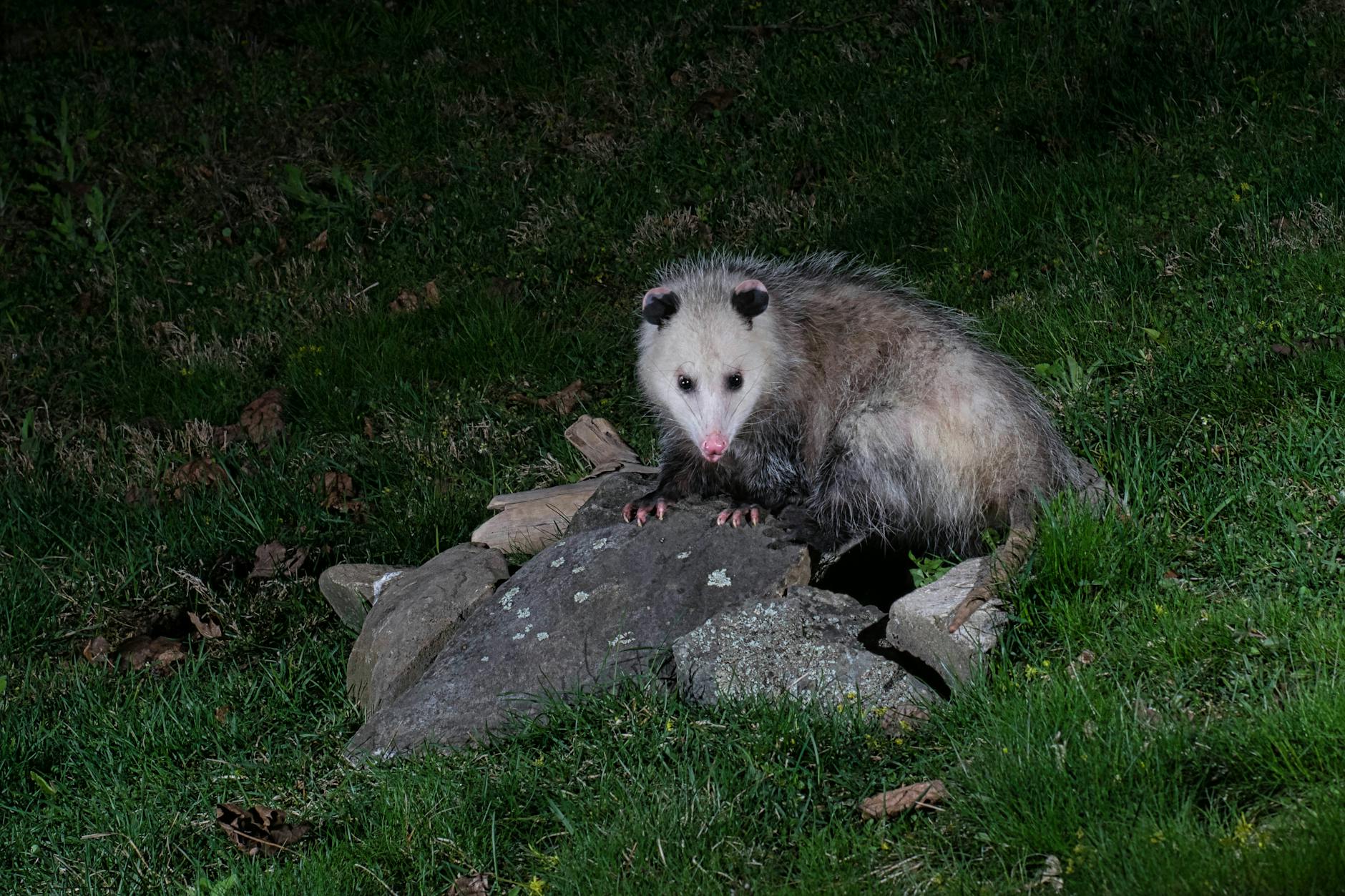Please be kind to our opossum friends…
Opossums are not dangerous to humans and are beneficial to the environment. Please don’t hurt them.
Both possum and opossum correctly refer to the critters found in North America
According to the Merriam-Webster dictionary, “both possum and opossum correctly refer to the Virginia opossum frequently seen in North America.” So, both possum and opossum are correct. Possum is the accepted term for casual use. Opposum, pronounced with or without the ‘O,’ is the accepted term for technical and scientific use.

When scared, possums involuntarily “play dead”—they lie still and emit a smell from their anal glands
When scared, possums involuntarily enter a state called thanatosis aka “playing dead.” They lie motionless and emit a foul-smelling fluid from their anal glands to deter predators. They don’t do this consciously—they literally can’t help it. It may be the equivalent to “passing out” or fainting.
Learn more >> https://asknature.org/strategy/opossums-feign-death-to-evade-predators/

Possums are immune to snake venom from rattlesnakes and cottonmouths
Possums are immune to snake venom from rattlesnakes and cottonmouths. This is due to a protein in their blood called LTNF (Lethal Toxin Neutralizing Factor).
Learn more >> https://www.nationalgeographic.com/animals/article/150323-opossums-snakes-snakebites-venom-health-world-science

The Virginia opossum is the only marsupial found in North America
Despite looking similar to a rat, possums are more related to the kangaroo. The Virginia opossum is the only marsupial found in North America.

Female possums carry and nurse their young in a pouch—similar to kangaroos
Only 14 days after mating, possums can have up to 20 babies at birth—the young are carried and nursed in a pouch similar to kangaroos.
Learn more >> https://opossumsocietyus.org/general-opossum-information/opossum-reproduction-lifecycle/
Possums eat pests like ticks, cockroaches, rats, and mice—reducing the spread of diseases
Possums eat pests like ticks, cockroaches, rats, and mice. They can consume thousands of ticks in a season. This helps reduce the spread of tick-borne diseases like Lyme disease. Possums also reduce the spread of disease as scavengers by eating dead animals and decaying fruit.
Learn more >> https://www.nps.gov/articles/000/opossums.htm#:~:text=While%20they’re%20not%20the,of%20the%20ticks%20they%20encounter.

Possums rarely catch or carry rabies and Lyme disease
Possums are resistant to diseases like rabies due to their low body temperature. This makes it difficult for the virus to survive. It can occur but it is very, very rare for the disease to thrive.

Despite being scavengers, possums like to keep clean and are excellent groomers.
Despite being scavengers, possums like to stay clean and are excellent groomers. Possums like to be clean and will spend all day grooming themselves.
Learn more >> https://www.ajc.com/lifestyles/home/not-playing-here-how-possums-can-help-your-household/HzKwFxddP36d7Al86oZjiN/

Possums have around 50 teeth—that may make them look angry and aggressive
Possums may look aggressive when they show their teeth but they are not—they just have a lot of teeth.
Learn more >> http://www.aaanimalcontrol.com/professional-trapper/gallery/pages/opossum021.html

Possums can hold and hang onto things with their tails
Possums have prehensile tails, which means they can grasp and hold objects. Their tails are also used to help with climbing and balancing. Young possums will sometimes briefly hang from branches by their tails.
Possums also have opposable thumbs and whiskers which helps in their dexterity and sensory perception.
Learn more >> https://indianapublicmedia.org/amomentofscience/do-opossums-actually-hang-by-their-tails.php


